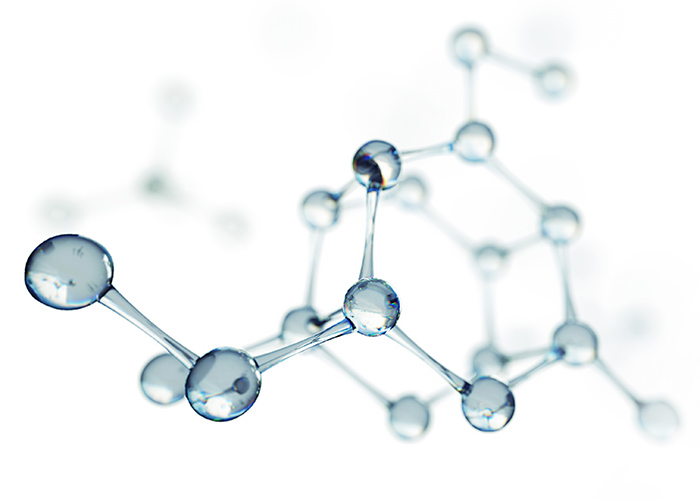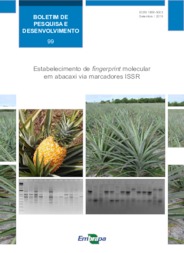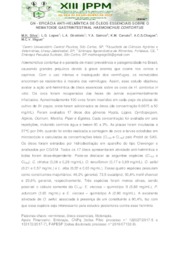Virtual library of chemical structures is created to gather data on Brazilian biodiversity
Virtual library of chemical structures is created to gather data on Brazilian biodiversity
Embrapa has just organized a virtual library of chemical structures associated with Brazilian biodiversity. The database will initially gather information on substances isolated from the leaves of cashew trees, yellow mombin trees, hog plum trees and pineapple plants. But in the future, the organizers intend to expand the collection and include other species. The goal is to facilitate the discovery and the use of active principles hidden in banks that conserve genetic material.
The library is in its beta version for tests before the access is granted to Embrapa researchers and partner scientists. The system will remotely supply countless data about chemical substances isolated from the catalogued plants, which should expedite the length of research.
It will be possible to consult molecule images in 2D and 3D and obtain information about their structures, such as exact mass, relative mass and remaining properties. It will include data about the associated species, such as genotypes, types of cultivar, phytochemical studies and bioassays conducted, as well as the geographic coordinates of where the samples were collected and their location via Google Maps.
Each chemical structure available in the virtual platform corresponds to a plant sample preserved in a capsule that was frozen at -80°C in the Multiuser Laboratory of Chemistry of Natural Products, at Embrapa Tropical Agroindustry. The researchers believe that the project will facilitate the progress of knowledge regarding chemiodiversity and the variability of metabolites (active substances or active principles) of the Active Germplasm Banks (gene banks, i.e. banks that conserve genetic material).
A boost for the bioeconomy
"In the course of 20 to 30 years, this database will be a valuable asset for Embrapa", celebrates the researcher Guilherme Julião Zocolo, one of the members of the team behind the launch. He stresses that the collection should facilitate the development of new products from the species catalogued, because the information will be organized and easily available for researchers.
"The tool represents a quality leap in the possibility of adding value to biodiversity resources", Zocolo asserts. The researcher recalls that the creation of libraries of biologically active substances or of extracts associated to chemical and pharmacological databases is still underexplored. "Such association is important for the selection of new applications and for the development of new products, which entails advances in the bioeconomy", he says.
The libraries also enable the dereplication technique, which allows the identification of substances based on fast analysis, through a triage and without isolation, which saves time and resources. Currently, in order to identify molecules, the researchers need to use methods to isolate the substance to be studied, which requires resources and more time. Dereplication makes the identification process more agile and assertive, accelerating the discovery of molecules of interest.
Search for anticancer substances
The new library is one of the results of a project Embrapa initiated in 2016, which aims at prospecting, chemically identifying and cataloguing bioactive substances with anticancer potential in hog plum trees, yellow mombin trees and pineapple plants. The first part of the project includes, among others activities, the cataloguing of about 100 natural substances and more than 100 plant extracts at Embrapa Tropical Agroindustry's Active Germplasm Bank, as well as physically structuring the entire library.
The physical structure for sample preservation is already in full operation in the Multiuser Laboratory of Chemistry of Natural Products. The samples collection, cataloguing and data description is performed by a multidisciplinary team and involves high technology analytical equipment, such as ultraefficiency Chromatography combined with mass spectrometry (MS) and Nuclear Magnetic Resonance (NMR).
"The project reports the involvement of all the whole team at the Multiuser Laboratory of Chemistry of Natural Products: the researchers Edy Sousa de Brito, Kirley Canuto and the analyst Lorena Mara, a group with professionals from different but complementary areas. Moreover, other skills were incorporated, with the participation of researchers from the University of São Paulo (USP) and the Federal University of Paraíba (UFPB)”, Guilherme Zocolo explains.
Expertise from chemists and programmers
In order to help in the implementation of the library's web interface, professor Fernando Batista da Costa, from the Ribeirão Preto College of Pharmaceutical Sciences of the University of São Paulo (FCFRP-USP), has just started a two-month stay as a visiting researcher at Embrapa's Multiuser Laboratory of Chemistry of Natural Products. The professor's visit was possible thanks to another project submitted by Embrapa's team to the Ceará Foundation to Support Scientific and Technological Development (Funcap).
Fernando Batista da Costa has a postdoctorate in chemoinformatics from the Computer-Chemie-Centrum at the Friedrich-Alexander-Universität Erlangen-Nürnberg, in Germany. He was the mentor of AsterDB, a database of chemical structures from Asteraceae (family to which sunflowers belong) maintained by FCFRP-USP in collaboration with UFPB.
According to the professor, the system being developed by Embrapa will be very similar to AsterDB and will count on the same developer team - a group of researchers from UFPB, that gathers chemists and programmers.
Fernando da Costa explains that this type of library accelerates technological innovation and offers applications in several areas, such as agriculture, pharmacy and ecology. In the world, there are countless libraries of the sort, some of which specializing in trading data. In Brazil, only two are public and tied to universities. Besides AsterDB, the Core Team for Bioassays, Biosynthesis and Ecophysiology of Natural Products at the São Paulo State University (NuBBE-Unesp) have maintained NubbeDB, a virtual database of natural products derived from Brazilian biodiversity.
Translation: Mariana Medeiros
Verônica Freire (MTb 01225/CE)
Embrapa Tropical Agroindustry
Press inquiries
agroindustria-tropical.imprensa@embrapa.br
Phone number: +55 85 3391-7116
Further information on the topic
Citizen Attention Service (SAC)
www.embrapa.br/contact-us/sac/



